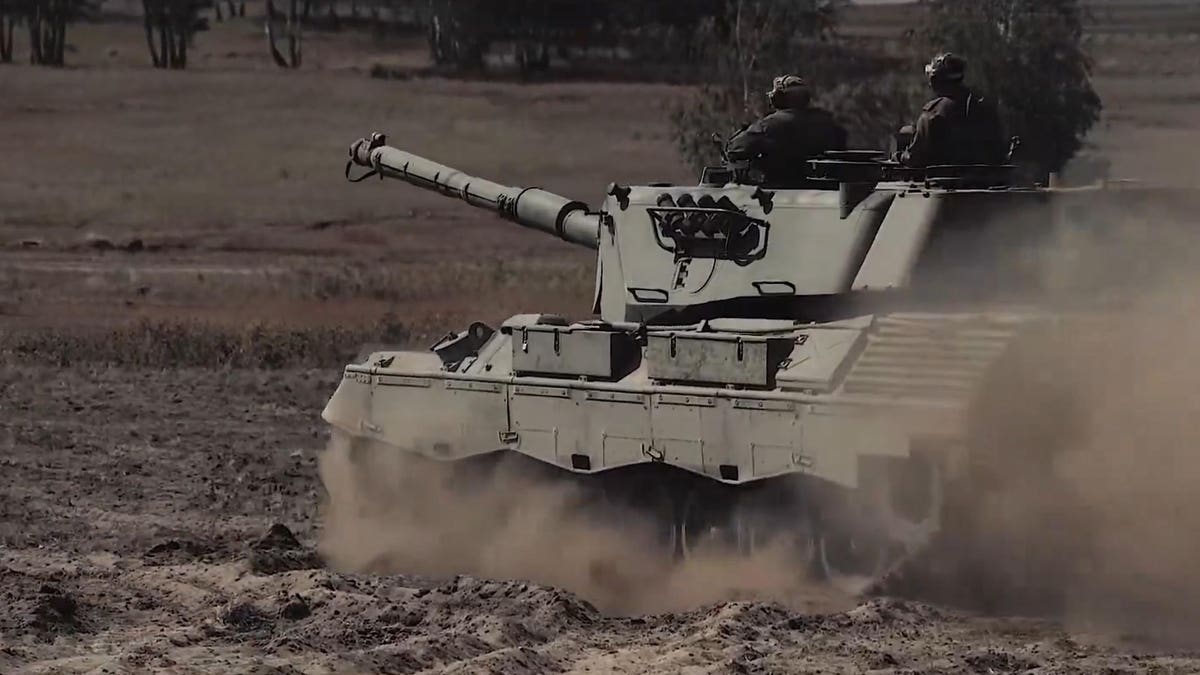Yes, Ukraine’s 1980s-vintage, German-made Leopard 1A5 tanks are thinly-armored. Yes, more than a few of the 40-ton, four-person tanks—200 of which Ukraine is getting from a Danish-Dutch-German consortium—have arrived in Ukraine broken.
But there’s at least one reason the Ukrainian Leopard 1 crews, who have been training with Danish and German instructors at a base in Germany, like their aged tank—a reason that has nothing to do with how numerous the Leopard 1 is.
“The advantage of the Leopard over, for example, the T-64 is in accuracy, range and speed,” a gunner named Oleksiy told ArmyInform.
It’s true: the Leopard 1A5 is a fast and accurate shooter. It’s not for no reason that one Danish tank instructor advised his Ukrainian trainees to fight while on the move. The Leopard 1 “is made for driving and shooting,” the instructor said.
German tank-maker Krauss-Maffei Wegmann gave the Leopard 1A5 what was, at the time, one of the world’s leading tank guns: the rifled 105-millimeter L7 from Royal Ordnance in the United Kingdom. Forty years later, the L7 still is an effective weapon, if a bit less powerful than the latest 120-millimeter guns are.
But it’s not the gun itself that makes the Leopard 1A5 such a fast and accurate shooter. It’s the tank’s whole integrated combat system, which includes the gun and its stabilizers, the gunner’s optics and the tank’s computerized fire-control system. On the Leopard 1A5, the FCS is the EMES-18, which also equips the much heavier Leopard 2.
The EMES-18 after all these years still is one of the best tank fire-controls. It combines a laser rangefinder with a ballistic computer. To aim the gun while stationary, the gunner—peering through his optics—uses a joystick to lay his crosshairs on the target, fires the laser to help the computer calculate range and then fires the gun.
The FCS assists by automatically adjusting the gun’s elevation based on the range data the computer gets from the laser. No need for the gunner manually to calculate the right angle. And the computer is fast, requiring just a second after reading the laser reflection to adjust the gun.
The fire-controls must work a little harder while the tank or its target—or both—is moving. After all, the gunner must lead the shot. Again, the EMES-18 automatically leads the gun by calculating the wind, the air-pressure and—most critically—the target’s motion relative to the tank.
What’s special about the EMES-18 is that it can achieve the latter without data from the laser. Instead, it measures the rotation of the Leopard 1’s turret over a second or two as the gunner holds the crosshairs on the moving target and presses a button.
All the gunner has to do is keep his crosshairs on the enemy long enough for the EMES-18 to crunch the numbers. After that, he fires the laser for elevation and then shoots. Track, laze, blaze—all in quick succession. If the lead is off, he can shoot again without taking the time first to fire the laser.
The EMES-18’s ease-of-use—and thus the Leopard 1A5’s shooting speed—is legendary. While by now all of the latest tanks have fire-controls that automatically adjust elevation and lead, most of them need data from the laser for both adjustments.
And many of them are slower than the EMES-18 is. A T-64 typically shoots no faster than eight rounds a minute despite having an automatic loader. A Leopard 1A5 with its human loader—and fast fire-controls—should manage 10 rounds a minute.
Read the full article here





